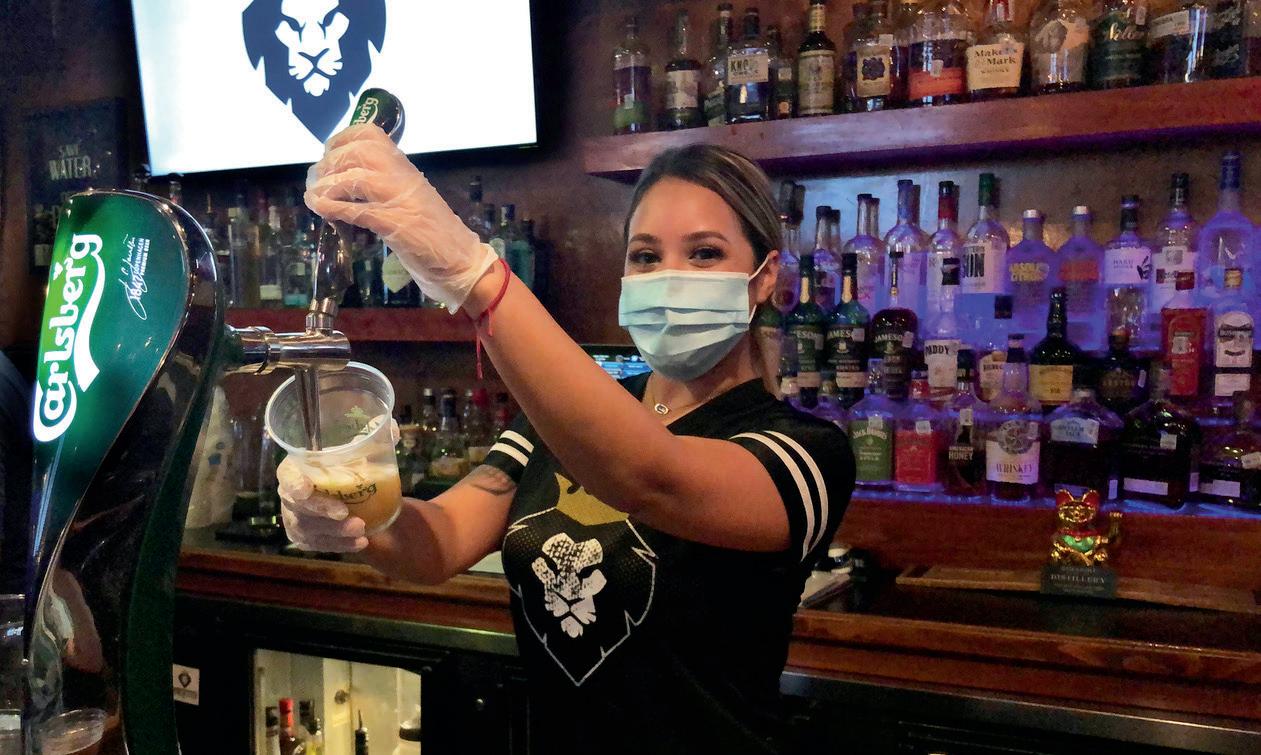news
Nina Rangel
Gov. Greg Abbott’s Gamble on Opening M the Texas Economy Has High Stakes for Workers Across the State
Employees at the Winchester in SA voted on whether to reopen Friday. Not all businesses gave workers that choice.
BY SANFORD NOWLIN
B
rad Lewis, a bar employee at San Antonio’s Hotel Emma, has been worried about being called back to work. But not as much as three coworkers who are immunocompromised and face higher health risks during the coronavirus pandemic. Lewis said he’s glad bars weren’t cleared to open on Friday, May 1, when Gov. Greg Abbott allowed restaurants, retailers and malls to reopen at 25% capacity. According to Lewis, the plan poses big risks to people who draw a paycheck dealing with the public. “The state is kind of shooting itself in the foot and putting workers in danger,” he said. “I think we’re going to see more infections.” The Republican governor’s plan to reopen the economy before Texas’ COVID-19 infection rates have
12
CURRENT | May 6 – May 19, 2020 | sacurrent.com
clearly peaked is a gamble, labor advocates argue. It’s a gamble with the lives of workers and their families. The reopening came a day after Texas reported its highest daily death toll from COVID-19 – a total of 50 fatalites. The same day, another 1,033 people tested positive, one of the state’s highest single-day totals. As of May 3, 31,548 Texans tested positive for the coronavirus and 867 have died. Last weekend — the first under Abbott’s reopening — Dallas County tallied its biggest single-day jump in COVID-19 cases, adding 234 on Sunday. Houston, meanwhile, recorded five deaths on Saturday, matching its highest single-day death toll. “Superseding local stay-at-home rules without the full virus-fighting infrastructure recommended by medical experts is a recipe for disaster for working
families and all Texans,” said Rick Levy, president of the Texas AFL-CIO. “The Governor’s plan can do much more to assure that working people will be safe when they are back on the job.” If the state is going to move ahead on a broad reopening of the economy, it should require employers to provide personal protective equipment and additional safety rules, Levy added. What’s more, it should offer protections to workers who report violations of the standards. Diana Lopez, executive director of the Southwest Workers Union, worries that if the return-to-work order results in a resurgence of COVID-19 cases, San Antonio could be hit especially hard. Roughly 13% of the city’s labor force works in the hospitality industry, where face-to-face interactions are part of the job and social distancing is difficult. Many low-wage workers furloughed from restaurant, retail and hotel jobs may feel no option but return, even if they have underlying conditions such as diabetes or high blood pressure or live in a house-





